
 For my parents,
For my parents,
Hannah and Zrubavel Shoshani,
of blessed memory
For my brother,
Shlomo Shoshani,
of blessed memory
Copyright (c) 2013 Dr. Abraham Z. Shoshani
Experiencing Your Potential
Following Feldenkrais' Work
The Elusive Border between Learning, Psychology, and Art
All rights reserved. No part of this book may be reproduced or transmitted in any form or by any means, electronic or mechanical, including photocopying, recording or by any information storage and retrieval system, without permission in writing from the publisher. For information regarding international rights please contact Dekel Publishing House, Israel; for North American rights please contact Samuel Wachtman's Sons, Inc., U.S.A.
Dekel Publishing House
www.dekelpublishing.com
EAN 978-965-7178-06-5
North American rights by
Samuel Wachtman's Sons, Inc.
978-1-888820-41-6 Kindle edition
Published in collaboration with
The Center for Classical Oriental Music
Jerusalem, Israel
Website: www.musicenter.org.il
Translated by Felice Kahn Zisken
Cover design by Studio KavGraph
Interior design and typesetting by:

For information contact:
Dekel Publishing House
P.O. Box 45094 Tel Aviv 61450, Israel
Tel: +972 3506-3235 /Fax: +972 3506-7332
Email: info@dekelpublishing.com
Samuel Wachtman's Sons, Inc.
2460 Garden Road, Suite C
Monterey, CA 93940, U.S.A.
Tel: +1 831 649-0669 / Fax: +1 831 649-8007
Email: samuelwachtman@gmail.com
 Foreword
Foreword
In Experiencing Your Potential , Dr. Shoshani confronts a challenging topic. For this he enlists, his rich experience in mentoring students in various art disciplines and his accumulated knowledge of neurophysiology, psychology, philosophy, and education.
Dr. Shoshani's preparation of the student is not a training technique. His every word is charged with profound educational meaning. The student learns more than the different implementations, he learns about himself as performer, according to the path that the author has outlined for him.
The essence of Dr. Shoshani's work can be summarized in his differentiation of four basic components in scientific activity and artistic self-expression:
1. Experiencing of the self as fully involved in doing and acting. 2. The feeling of control over one's actions. 3. The individual's involvement in a goal which is clarified as it is realized. 4. The feeling of being directed by necessity and the desire to continue despite the difficulties.
This work offers thinking challenges to the interested reader and inspiration and guidance to anyone involved in performance education.
Prof. Zvi Lam Hebrew
University, Jerusalem
 Preface
Preface
My career as an artist and educator was influenced by the lessons of Dr. Moshe Feldenkrais. The heart of the matter appears to lie in clarifying the intention and realizing it in movement, such that there is no separation between the intention and the movement, and that in the eyes of the performer the two are perceived as one. Dr. Feldenkrais taught us that the unity and simplicity of the movement are the basis of its beauty, both in the feeling of the performer and in the eyes of the beholder.
Moshe Feldenkrais devised numerous lessons composed of series of movements that train us to recreate within ourselves learning processes free of any outside influence or unclear reason. These processes, accumulated over many years, could contribute towards changes in how we adapt to the field of gravity, as well as in how we perceive ourselves and our fellow man.
In this book I discuss, among other subjects, the connections between Dr. Feldenkrais' work and works of other experts in the fields of neurophysiology, psychology, education, philosophy, and more, coupled with my own extensive experience in teaching various artistic disciplines.
My work has shown that the concept of mind and its unity are also connected with the various neuromotor systems, and therefore a connection can be made between the imaginary artistic world and the learning processes, which are none other than the building of the mind and bringing it from the potential to the actual.
The psychophysical unity of man is reflected in artistic activity, in which the physical reality and the symbolic reality frequently combine, and this is the moment of grace when the idea of unity of the mind, which in the past drew the attention of numerous researchers, is brought to fruition.
I had the privilege to be among Dr. Feldenkrais' students in the 1960s and 1970s in Israel, and to this day I practice his methods as part of my daily regime.
As a result of the positive response received from many readers of the original printed edition, the author and publisher have decided upon publishing this new eBook edition in view of rendering the book further accessible to even wider audience.
Dr. Abraham Z. Shoshani
Jerusalem, March 2013
 Introduction
Introduction
Can one build a model with a conceptual system that helps us understand both learning processes and the processes of artistic expression on the stage? Is there a connection between these two processes? In the natural sciences, for example, the concept of energy applies to all physical existence, which explains its depth. There is also a homogeneous weltanschaung , a perspective that all visual phenomena are of the same type. Can one, with the processes of learning and artistic expression, do what "science" does, namely, deconstruct the whole into its important elements so that their inter-relationships and their relationship to the whole are revealed? The whole, in our case, is the human being who is connected in different ways to his environment, to one extent or another, and sometimes in extreme cases, cut off from this connection.
It seems to me that, at their best, the art of performance and the learning process clarify the individual's connection with himself and with his environment. In my opinion, work with the student who aspires to be an artist or researcher should aim to expand and deepen the range of listening to what is happening within, by reducing " parasitic forces " which are often connected to the search for love and value and with taking on tasks too early, that is to say, without sufficient clarification of internal experiences that are intertwined with the studied and performed material.
These "parasitic forces" are physically expressed in the individual's self-imposed limitations, in excluding positions and movements that he profoundly feels may prevent love and appreciation. Reducing these forces may result in both a richer use of self and a clarification of emotional and cognitive processes that was impossible earlier.
In my experience, after reducing the "parasitic forces", the student feels a sense of wholeness with himself and is more alert to what happens in himself and in his environment. He is in a state of inner growth and flourishing, which brings great satisfaction. In my opinion, both the performer and the student should be involved in processes that become clearer as they are performed and not be involved in "efforts" to "perform" activities which actually stop the process and prevent spontaneous action (see below the definition of "effort" and "spontaneity").
Next page
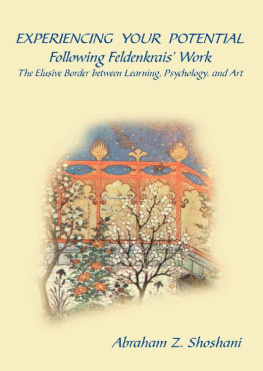

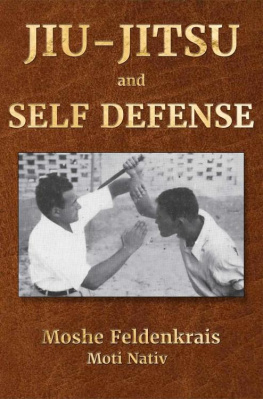
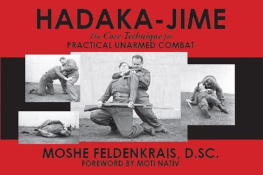
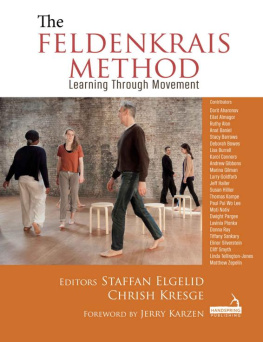
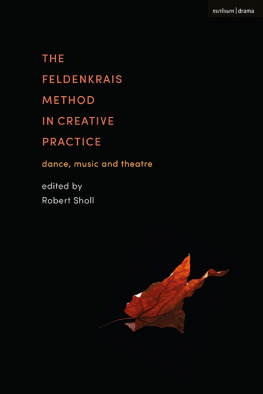

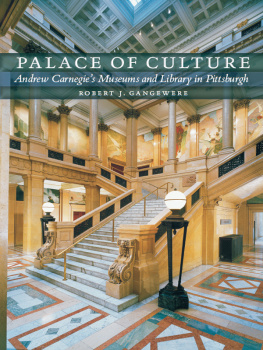

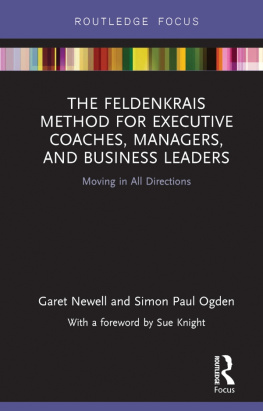
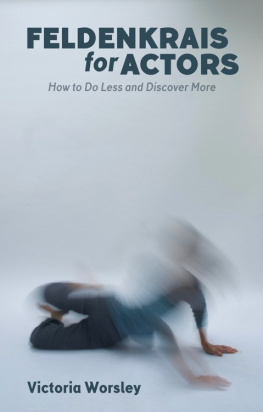
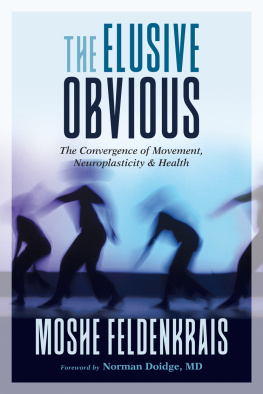
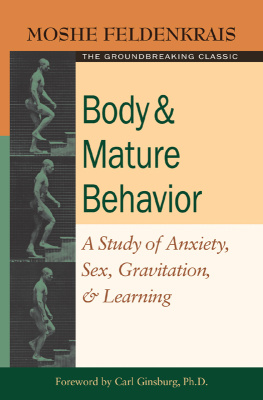

 For my parents,
For my parents,
 Foreword
Foreword